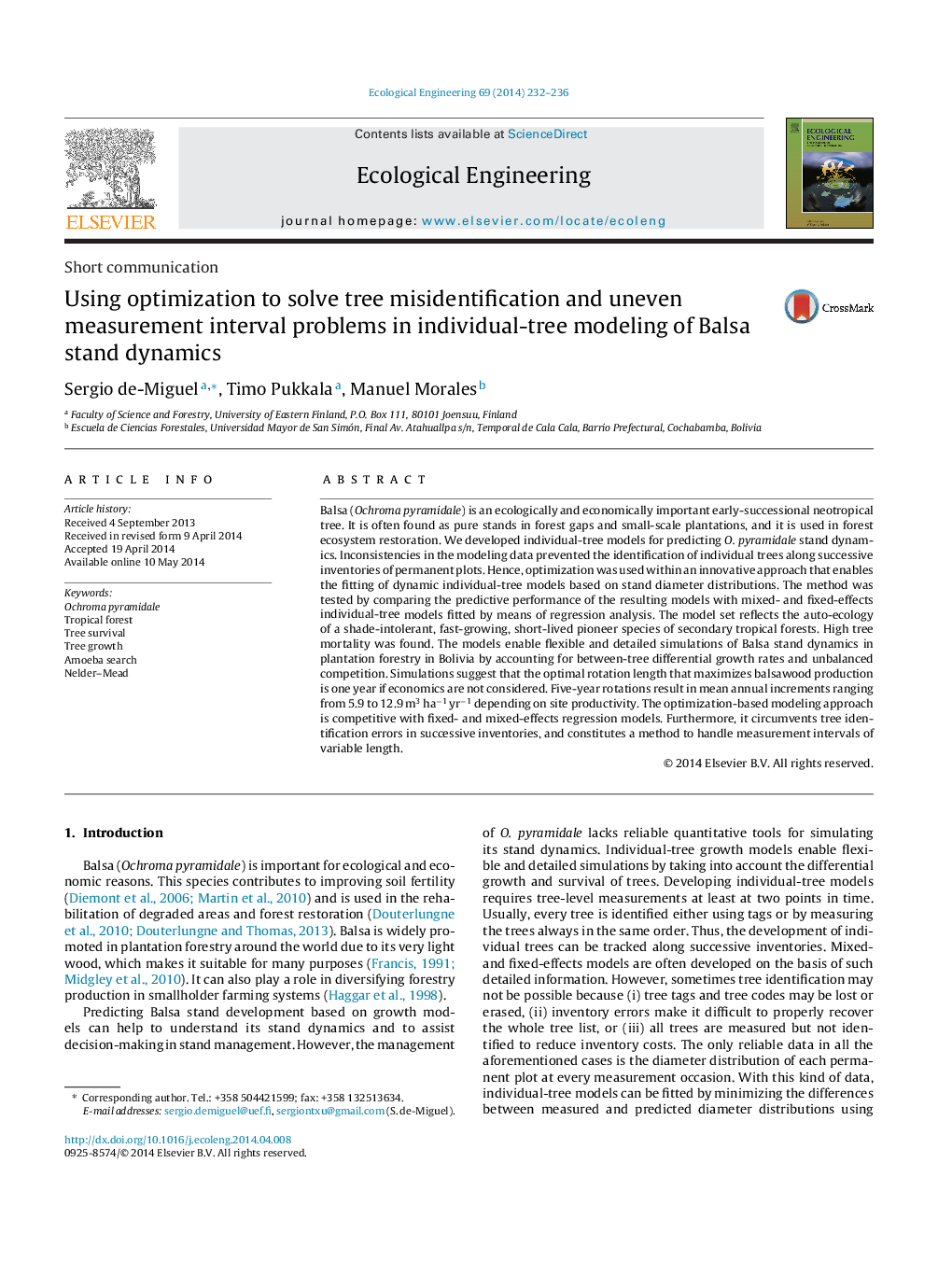| Article ID | Journal | Published Year | Pages | File Type |
|---|---|---|---|---|
| 4389397 | Ecological Engineering | 2014 | 5 Pages |
Balsa (Ochroma pyramidale) is an ecologically and economically important early-successional neotropical tree. It is often found as pure stands in forest gaps and small-scale plantations, and it is used in forest ecosystem restoration. We developed individual-tree models for predicting O. pyramidale stand dynamics. Inconsistencies in the modeling data prevented the identification of individual trees along successive inventories of permanent plots. Hence, optimization was used within an innovative approach that enables the fitting of dynamic individual-tree models based on stand diameter distributions. The method was tested by comparing the predictive performance of the resulting models with mixed- and fixed-effects individual-tree models fitted by means of regression analysis. The model set reflects the auto-ecology of a shade-intolerant, fast-growing, short-lived pioneer species of secondary tropical forests. High tree mortality was found. The models enable flexible and detailed simulations of Balsa stand dynamics in plantation forestry in Bolivia by accounting for between-tree differential growth rates and unbalanced competition. Simulations suggest that the optimal rotation length that maximizes balsawood production is one year if economics are not considered. Five-year rotations result in mean annual increments ranging from 5.9 to 12.9 m3 ha−1 yr−1 depending on site productivity. The optimization-based modeling approach is competitive with fixed- and mixed-effects regression models. Furthermore, it circumvents tree identification errors in successive inventories, and constitutes a method to handle measurement intervals of variable length.
